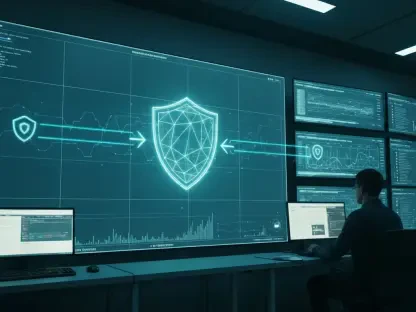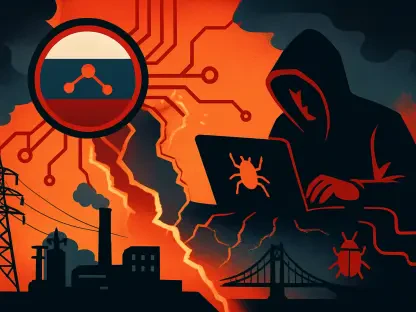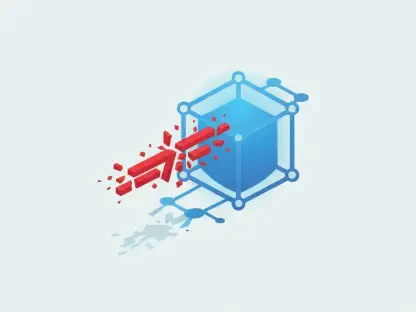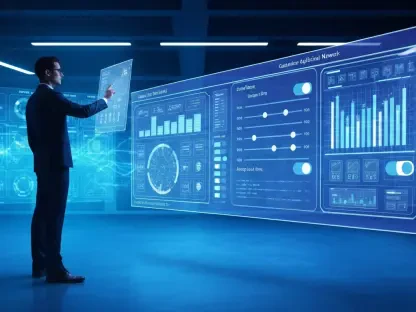The digital landscape of Africa’s financial sector has become a hotbed for cybercriminal activity, with a notable series of cyberattacks unfolding across the continent. An increasingly alarming trend involves groups like CL-CRI-1014, a collective of cyber adversaries targeting African banks with sophisticated methods. These threat actors have deftly exploited open-source tools, leveraging them to infiltrate, control, and compromise critical banking networks. This situation not only endangers financial institutions but also highlights a broader challenge that cybersecurity professionals urgently need to address. The intricacies of these attacks illustrate the blending of open-source technology with criminal ingenuity to create elaborate attack frameworks.
Escalating Cyber Threats to Africa’s Financial Institutions
The Rise of CL-CRI-1014
Since July 2023, the threat actor group identified as CL-CRI-1014 has aggressively targeted African banks, employing a strategic mix of open-source tools to facilitate their incursions. Among the primary weapons in their cyber arsenal are PoshC2, Chisel, and Classroom Spy—utilized prominently to penetrate and establish a foothold within secure networks. PoshC2 serves as a command and control framework, allowing continuous remote access and communication with compromised systems. Chisel functions as a tunneling tool, adept at bypassing network defenses and maintaining undetected movement across layers of security. Meanwhile, Classroom Spy provides extensive capabilities for remote monitoring, rounding out a well-coordinated attack suite.
The utilization of these open-source applications is not indicative of a vulnerability within the software itself but demonstrates CL-CRI-1014’s cunning ability to repurpose legitimate technology for nefarious purposes. By hiding their activities behind signatures of legitimate applications, they bypass standard security detection mechanisms. This modus operandi enables them not only to operate discreetly within victim networks but also to position themselves as initial access brokers. These brokers specialize in breaching networks, packaging the access credentials, and selling them on the dark web, essentially commoditizing access to critical financial infrastructure to other malicious entities.
Strategic Penetration Techniques
CL-CRI-1014 employs a raft of advanced techniques to gain and sustain access across targeted institutions’ environments. They exploit remote services creation and use Distributed Component Object Model (DCOM) tactics, capitalizing on features like PsExec to move laterally within compromised networks. This lateral movement facilitates the deployment of malicious payloads, further entrenching their control with stealth. By executing systemic penetrations, these attackers can embed deeply within organizations, ensuring that their presence remains under the radar of conventional security protocols. Their ability to mimic the operations of legitimate network applications substantially complicates efforts by cybersecurity teams to identify and neutralize these threats.
Through methodically altering open-source tools to resemble trusted applications, the attackers effectively camouflage their malicious intent. This sophisticated approach not only improves their chance of initial success but also enhances their ability to operate within the compromised ecosystem over long periods, generating greater opportunities for exploitation or secondary attacks. The transformation of innocuous software into a potent vehicle for intrusion articulates a fundamental shift in cybercriminal strategies—emphasizing how open-source tool access can be weaponized, often with relative ease, by well-coordinated malicious groups.
The Technical Underpinnings of the Threat
PoshC2 and Offensive Cyber Tactics
Among the technical strategies employed by CL-CRI-1014, the use of PoshC2 stands out as central to their operational effectiveness. The platform’s versatility lies in its capacity to produce a variety of implants in numerous programming languages, including PowerShell, C#.NET, and Python. These implants enable persistent command execution, offering the actors a perpetual hand within compromised infrastructures. The adaptability of PoshC2 to various operating systems enhances its utility, making it an invaluable tool for threat actors seeking sustained access with minimal exposure.
Notably, the group has shifted from using MeshAgent to Classroom Spy, marking a significant evolution in tactical methods. Classroom Spy not only supports remote desktop surveillance but also affords access to keylogging, audio, and camera functionalities. This expanded scope of intrusion allows for a high degree of control over compromised assets, essentially turning machines into unwitting sources of intelligence and surveillance. Such capabilities are critical in undermining financial institutions, facilitating the theft of sensitive data, and enabling ongoing malicious operations under the guise of normalcy.
Network Integration and Communication
Advanced tactics also extend to network integration and maintaining covert communication channels within affected systems. CL-CRI-1014 achieves this by creating services, configuring PoshC2 shortcuts within startup folders, and scheduling overlapping tasks disguised as genuine updates, such as using filenames like CortexUpdater.exe. Chisel plays a pivotal role post-compromise, acting as a network proxy that circumvents firewall protections, sustaining persistent communication flows between command servers and infected machines.
This network communication mastery allows the attackers to perform a range of operations without alerting existing monitoring systems. By packing PoshC2 implants with a Nim language-based shell, they ensure that their rogue scripts activate only under certain conditions—such as when identifying an Active Directory domain—thereby filtering out unviable targets. This selective targeting indicates a highly calculated approach, framing their efforts not as random acts of cyber aggression but as carefully orchestrated campaigns directed at specific, lucrative industries.
Industry Responses and Security Implications
Solutions for Heightened Security Awareness
To combat this growing menace, industry players must look toward comprehensive security interventions and technological enhancements, as demonstrated by organizations such as Palo Alto Networks. Through products like Cortex XDR and XSIAM, the ability to detect and mitigate these sophisticated attacks is significantly bolstered. Employing machine-learning algorithms to identify anomalous domains and URLs provides a proactive stance against emerging threats. Services like Unit 42’s Deep and Dark Web monitoring offer further insights, enabling institutions to anticipate the movements and methodologies of threat actors by observing underground criminal communications.
For financial institutions, drawing on these insights forms a crucial part of strengthening defenses. Understanding how malicious entities operate and updating threat detection frameworks accordingly can help stave off potential breaches. This process entails a rigorous assessment of existing cybersecurity infrastructure, its capacity to detect mimicry attempts, and its responsiveness to identified vulnerabilities. Functional improvements in protective measures are vital as cyber threats continue to evolve in complexity and impact, demanding an equally dynamic and informed defensive stance.
The Broader Impact on Open-Source Tool Usage
This confrontation with cybersecurity threats underscores the broader implications of open-source tool accessibility in the hands of threat actors. While open-source applications have traditionally served legitimate purposes, their repurposing by cybercriminals calls for an industry-wide reconsideration of how such tools are managed and monitored. The potential for misuse entails revisiting security guidelines and practices to ensure that these tools do not become inadvertent enablers of global cybercrime.
Organizations must adopt a multi-faceted approach that includes bolstering defenses, educating personnel on emerging threats, and contributing to a collective understanding of how these tools are exploited. As the situation unfolds, the imperative to develop robust public and private sector partnerships cannot be overstated, allowing resource pooling and intelligence sharing to craft a concerted response. The success of defensive strategies rests on anticipating and adapting to these evolving attack vectors through cooperation and technological innovation.
Future Directions in Cybersecurity Defense
A Call for Enhanced Cyber Vigilance
The intricate challenges posed by threat actors like CL-CRI-1014 necessitate a recalibration of how cybersecurity defenses are developed and executed, particularly concerning the financial sector’s unique vulnerabilities. Organizations across high-risk industries must remain vigilant, ensuring their cybersecurity frameworks are resilient enough to counteract these sophisticated threats. By delving into incident analytics and threat intelligence garnered from cyber incidents, financial institutions can better navigate the threat landscape’s complexities.
Building awareness through the dissemination of reports and case studies that thoroughly explore these attacks’ dynamics helps broaden understanding of potential entry points within critical systems. This knowledge enables businesses and governments to design custom strategies that address specific challenges faced by the African banking sector—ultimately mitigating risks more effectively. Progress hinges on remaining ahead of cyber adversaries by embracing continuous education, adjustment of security postures, and fostering the next generation of cybersecurity solutions.
The Path Forward Through Collaboration
Africa’s financial sector has increasingly become a target for cybercriminals, as reports of cyberattacks across the continent continue to rise. Groups such as CL-CRI-1014 have been particularly successful, demonstrating a sophisticated approach to targeting African banks. These cyber adversaries have skillfully manipulated open-source tools, using them to penetrate, seize control, and compromise essential banking systems. Such activities not only put financial institutions at risk but also spotlight a pressing issue that cybersecurity experts must tackle urgently. The complexity of these attacks reveals how cybercriminals cleverly combine open-source technology with innovative strategies to construct intricate frameworks for executing their plans. This scenario underscores the need for heightened vigilance and sophisticated countermeasures to protect banking networks. As these threat actors continue to evolve their techniques, cybersecurity professionals must prioritize identifying vulnerabilities and fortifying defenses. Africa’s road toward digital security is laden with challenges, yet with proactive measures and collaboration, there exists a potential to safeguard financial assets against these rising threats.









